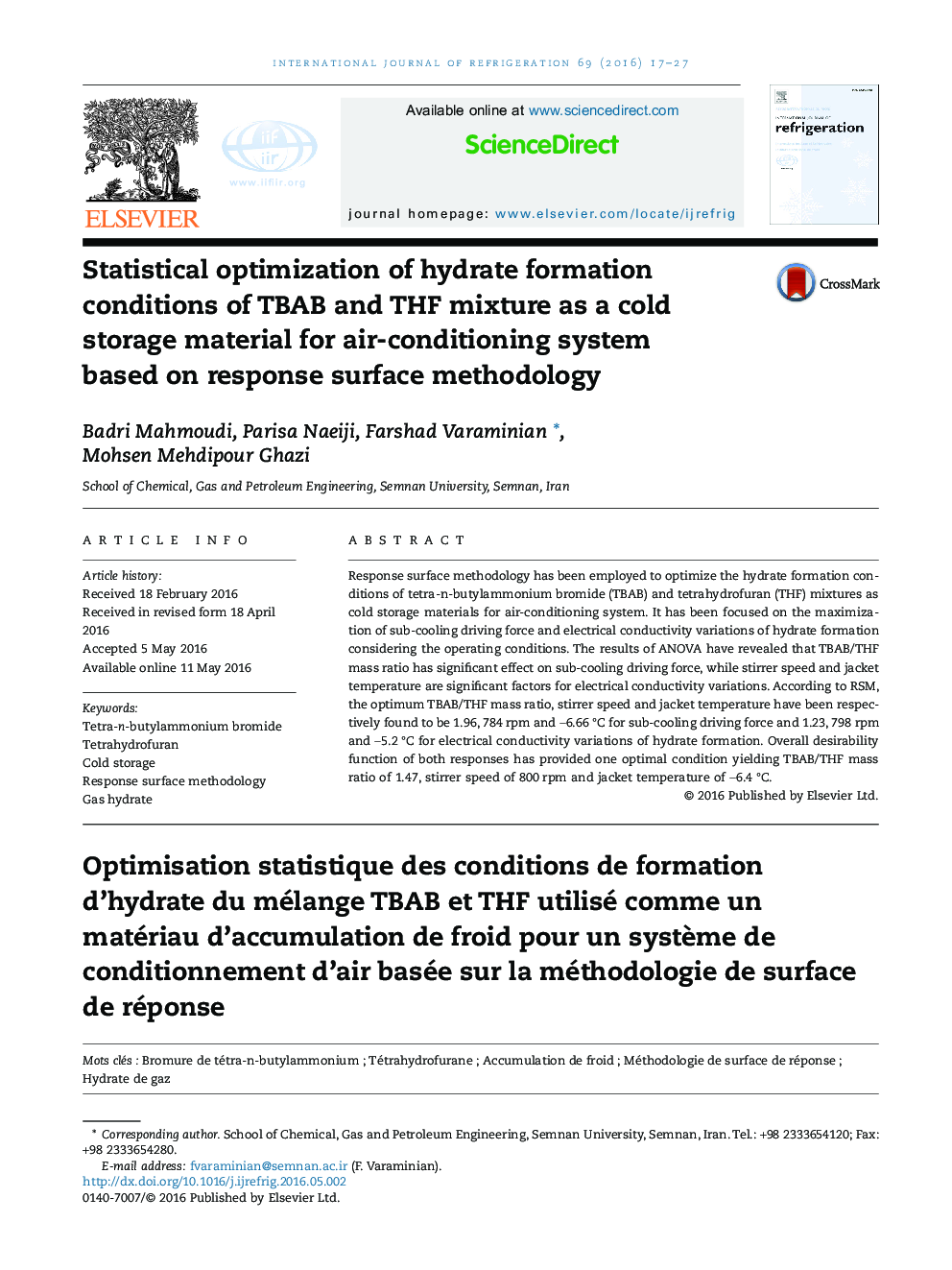| Article ID | Journal | Published Year | Pages | File Type |
|---|---|---|---|---|
| 789227 | International Journal of Refrigeration | 2016 | 11 Pages |
•RSM has been employed to optimize the hydrate formation conditions of TBAB/THF as a cold storage material.•Sub-cooling driving force and electrical conductivity variations of hydrate formation have been evaluated.•One optimal condition has been determined by overall desirability function.
Response surface methodology has been employed to optimize the hydrate formation conditions of tetra-n-butylammonium bromide (TBAB) and tetrahydrofuran (THF) mixtures as cold storage materials for air-conditioning system. It has been focused on the maximization of sub-cooling driving force and electrical conductivity variations of hydrate formation considering the operating conditions. The results of ANOVA have revealed that TBAB/THF mass ratio has significant effect on sub-cooling driving force, while stirrer speed and jacket temperature are significant factors for electrical conductivity variations. According to RSM, the optimum TBAB/THF mass ratio, stirrer speed and jacket temperature have been respectively found to be 1.96, 784 rpm and −6.66 °C for sub-cooling driving force and 1.23, 798 rpm and −5.2 °C for electrical conductivity variations of hydrate formation. Overall desirability function of both responses has provided one optimal condition yielding TBAB/THF mass ratio of 1.47, stirrer speed of 800 rpm and jacket temperature of −6.4 °C.
